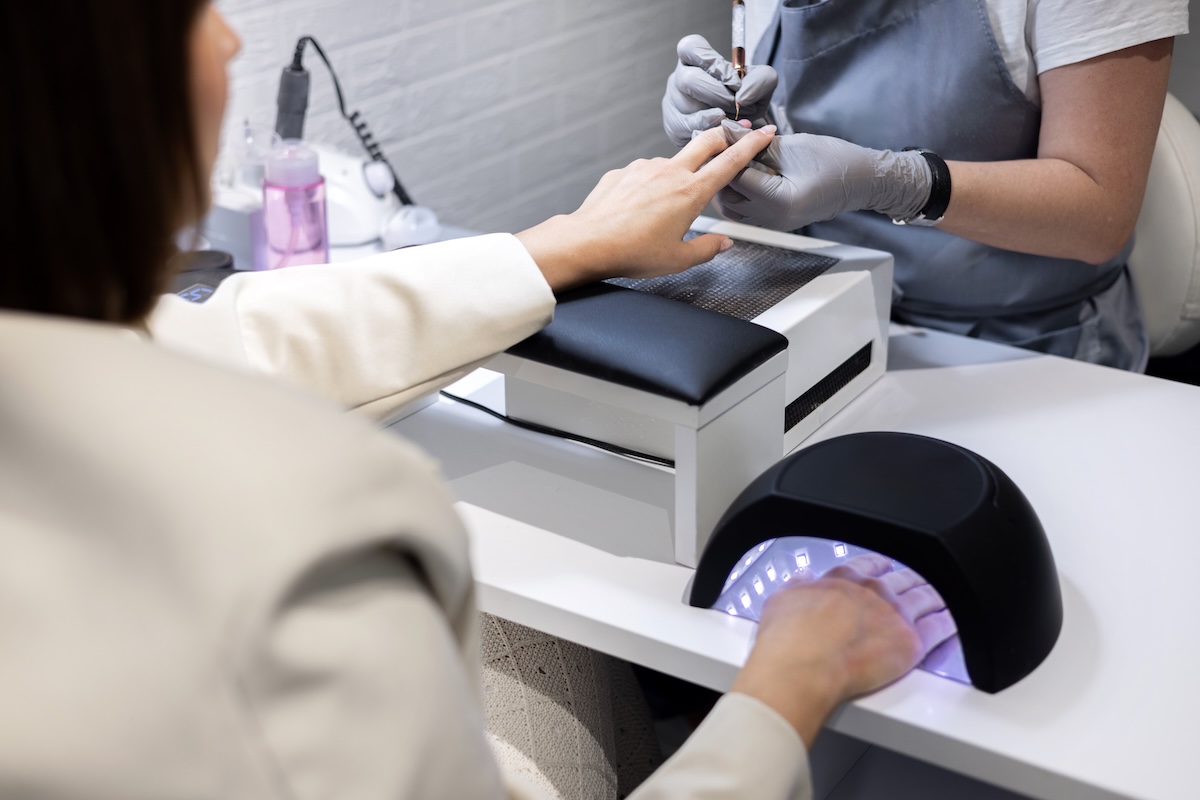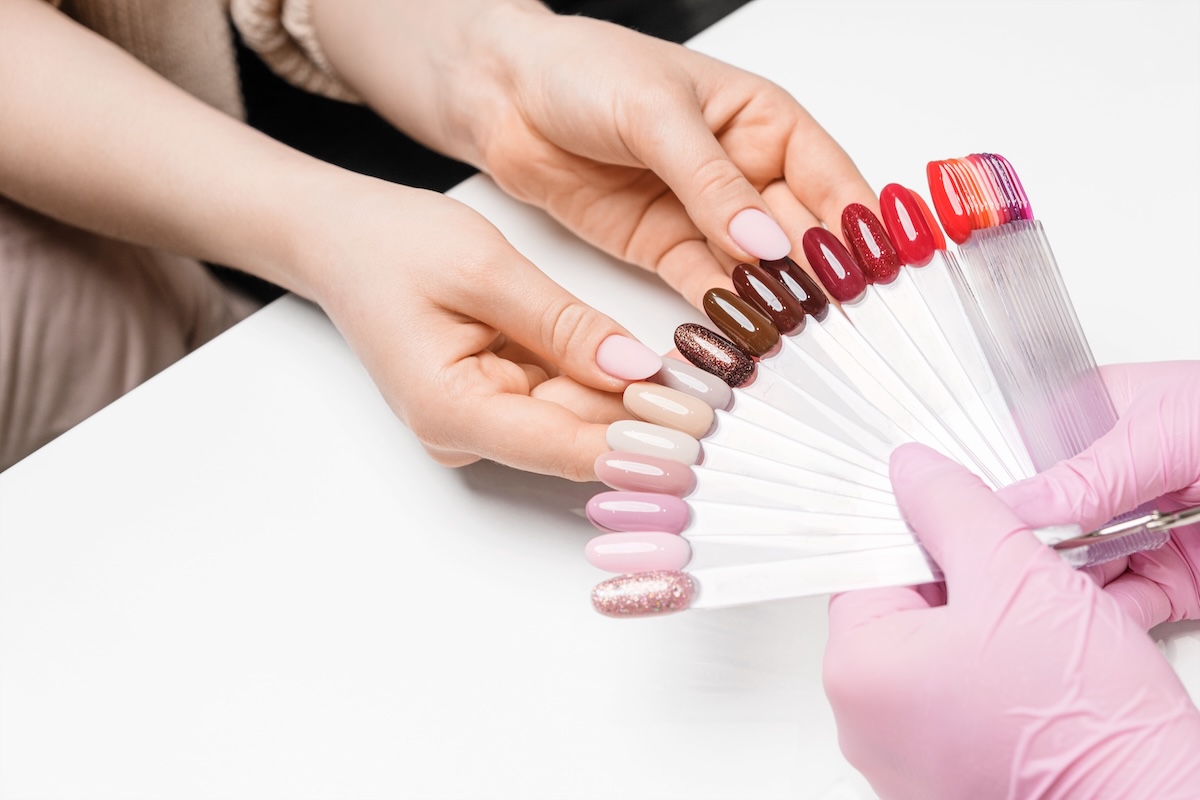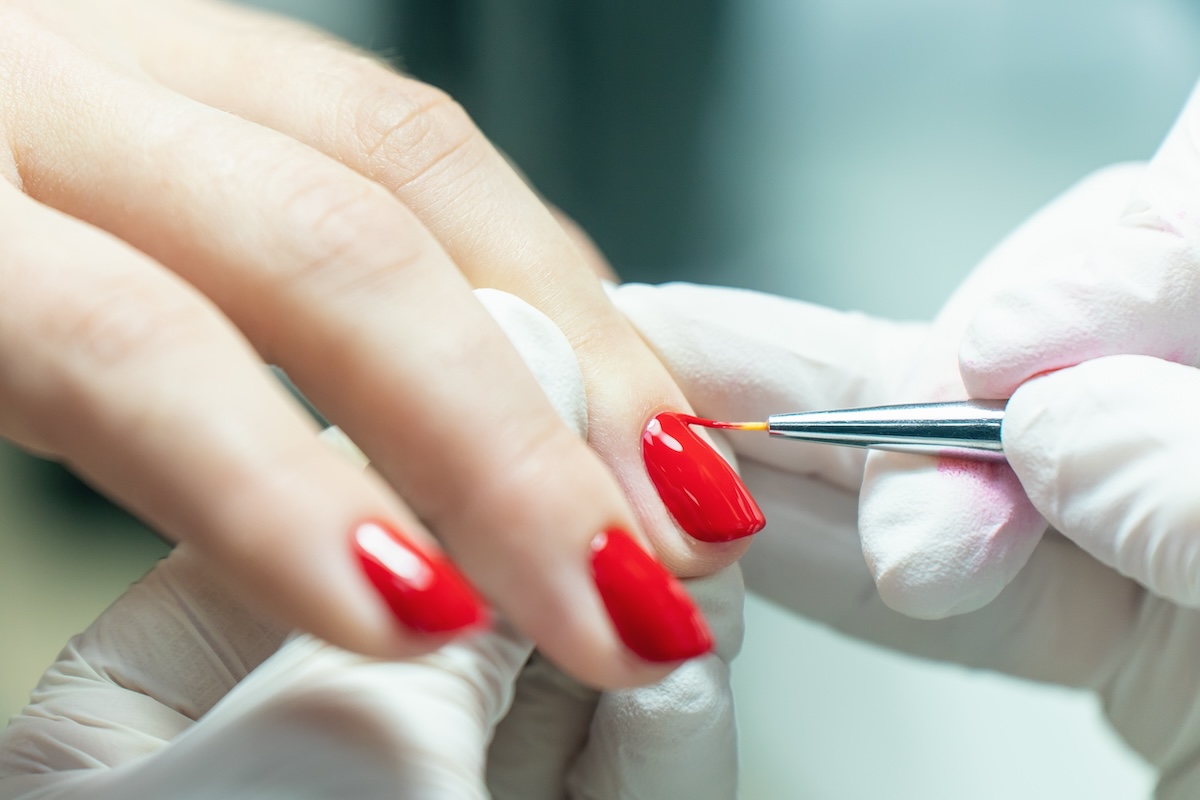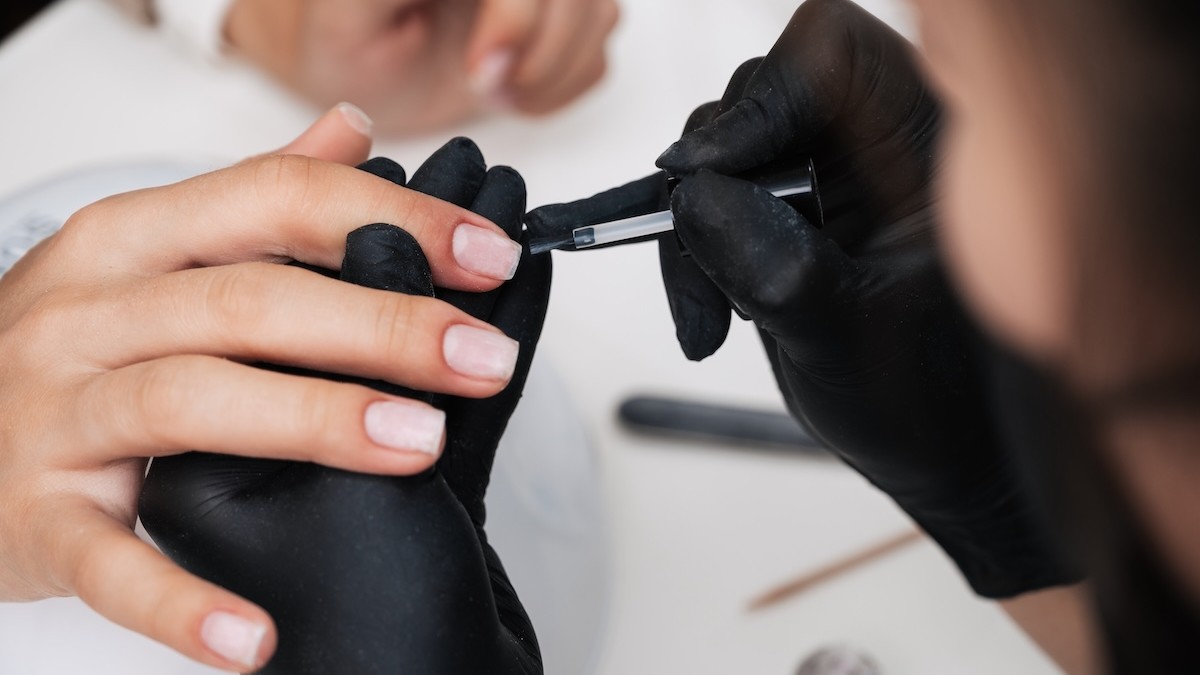How nail professionals can prevent gel polish allergies and protect clients
Allergic reactions to gel polish are becoming increasingly common, with both clients and nail technicians at risk if products are not applied or cured correctly.
The British Association of Dermatology (BAD) first issued a warning about gel allergies in 2018, after a study titled Epidemic of (Meth)acrylate Allergy in the UK Requires Routine Patch Testing found that 2.4% of people tested had an allergy to at least one type of (meth)acrylate chemical – an ingredient found in acrylic, gel and gel-polish.
The BAD raised further concerns in 2023, following comments made during a BBC programme. At the time, the BAD said in a statement that sensitisation to ingredients such as HEMA can occur “when the uncured products come into contact with any part of the skin”.
They added, “This is very likely when people apply a product themselves, or if insufficient training has been given to the nail technician.”
Although the DIY at-home gel kits popularised by consumers during the pandemic are being blamed for many of the cases of allergies, they can still occur in professional settings – with the BAD saying that nail technicians are most at risk of developing an allergy.
It’s important that professional nail techs know how to protect both their clients and themselves, so we asked nail experts to share their best practice for preventing contact allergies.
Is gel polish safe?
“Gel polish is safe when used by a professional nail technician who is competent and knowledgeable in all areas of nail technology,” says Katie Barnes, award-winning nail tech and owner of Katie Barnes Tool Range and Training Academy.
“This knowledge needs to include health and safety, and the nail tech needs to follow Health and Safety Executive (HSE) guidelines including Control of Substances Hazardous to Health (COSHH), wear PPE and follow manufacturing instructions.”
Barnes adds, “As with any chemical ingredient, including our household cleaning products, when this is not used correctly or the above is not followed, issues will arise.”
Inês Ferreira, quality assurance and regulatory affairs officer at nail brand Andreia Professional, agrees, stressing that gel polish systems are “highly safe when applied correctly by trained professionals”.
Ferreira explains, “In a professional setting, the combination of technical expertise, appropriate tools, and controlled working conditions significantly reduces the risk of adverse reactions.
“At-home users may lack the necessary knowledge or equipment, increasing the likelihood of incorrect application, under-curing and product contact with the skin – all of which contribute to sensitisation and allergies.”

What are the symptoms of allergies to gel polish?
Firstly, it’s important to identify whether symptoms are caused by an irritation or an allergy to a substance.
Contact dermatitis occurs when a product causes an irritation, with skin usually becoming red, blistered, dry and cracked.
“This usually improves if the substance causing the problem is identified and avoided, preventing it from developing into an allergy,” comments Barnes. “An irritation reaction usually occurs within a few hours or days of exposure to an irritant or allergen.”
Allergic contact dermatitis, however, builds up over time from overexposure to an allergen. Itching, redness, swelling, burning, peeling or blistering are common symptoms, which may not always appear only on the nails and hands.
Nail industry expert and educator Suzanne Clayton notes that puffy eyes, breathing problems and nasal irritation can also indicate allergy.
How long does a gel polish allergy last?
“An allergy will never go away because the immune system will never forget that specific allergen,” says Barnes.
Clayton warns that allergies can affect more than beauty treatments: “It can affect medical treatment because the same adhesive ingredients [like HEMA] are used in dental treatments, hip and knee replacements, diabetic patches, artificial cataracts and more.”
Which ingredients in gel polish can cause allergies?
There are several ingredients often found in gel polish that are known to cause allergies. The most common culprits are hydroxyethyl methacrylate (HEMA) and isobornyl acrylate (IBOA).
Barnes explains that HEMA may be linked to more allergies because of its small molecular size, which means it can be absorbed into the skin and nail plate more easily.
Ferreira advises techs looking for HEMA-free gels to check that the entire system is consistently HEMA-free: “Mixing products from different systems can lead to incomplete curing and higher risks of sensitisation.
“Always use curing lamps compatible with the formulation, follow application protocols precisely, and choose trusted manufacturers with documented safety profiles.”

Why are more cases of gel polish allergies being reported now?
Several factors are contributing to the rise, including more DIY use, low-quality training, and increased popularity of builder gels.
Ferreira highlights that education is a key protective factor, saying, “Proper training is essential in preventing contact allergies.
“At Andreia Professional, we emphasise hygiene, correct product handling, avoiding skin contact and understanding product chemistry.
“Using the correct curing lamp and application methods makes systems much safer and more reliable.”
She adds that common mistakes nail techs make include “applying product too close to the skin, using excessive amounts, not fully curing gels, or using incompatible lamps”.
What can nail techs do to prevent clients having allergic reactions to gel polish?
Improper curing is one of the main causes of allergic reactions. Always use the recommended lamp for the gel system, keep bulbs clean, and apply product in thin, even layers.
Ferreira’s golden rules for prevention are:
- Follow manufacturer protocols for application and curing
- Use only the recommended lamp
- Avoid skin contact at every stage
- Maintain a clean workstation
- Educate clients not to pick or peel gels, which can expose uncured layers
She also cautions against red flag practices: “Using low-quality products, mixing brands, skipping curing times, and reusing contaminated tools all compromise safety. Safety should always come before speed or cost-cutting.”
What should nail techs do if they think their client has developed an allergy?
“If an allergy is suspected, cease treatment immediately and do not apply any further nail products until the client has had an allergen test with a dermatologist,” says Barnes.
Ferreira adds that documenting the incident is essential: “The nail tech should immediately stop using the product, gently remove it, and advise the client to seek medical advice.
“It’s important to document the case and review the products used, in case further investigation is needed.”

How can nail techs protect themselves from developing allergies?
The correct use of PPE is crucial. Nitrile gloves should be worn and changed regularly, especially if they come into contact with uncured product.
Ferreira says, “Masks with appropriate filtration are essential when filing or handling dust to prevent inhalation of irritants.
“Nail techs should also receive training on correct PPE use, including donning and removal, to avoid contamination.”
Barnes adds that dust extraction units, long-sleeved uniforms and avoiding absorbent fabrics can also protect against airborne particles and accidental product transfer.
The future of nail safety
With allergy cases rising, brands are focusing on formulation innovation and better professional education.
Ferreira says Andreia Professional is investing heavily in safer formulas and education.
“We continuously develop safer, more skin-friendly gels, including HEMA-free systems. Looking ahead, we anticipate greater ingredient transparency, smarter curing technologies and advanced PPE to further reduce risks.
“Ultimately, a culture of continuous education and vigilance is the key to preventing gel polish allergies.”
You might also like:




